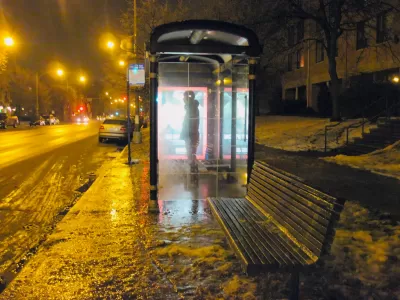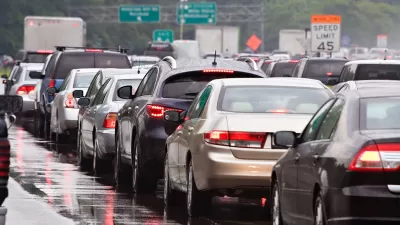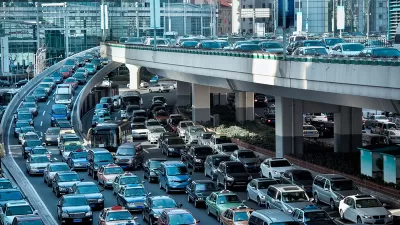Although unemployment has declined, according to this report commutes are getting longer. "Job sprawl" often plagues minority and poor areas where housing is more affordable.

A report recently issued by the Brookings Institution finds that "in more than 60 percent of neighborhoods with poverty rates above 20 percent and 55 percent of majority-minority neighborhoods, jobs are getting farther away."
Minority movement away from the "inner city" into suburbia exacerbates this trend: "the number of Hispanics living near jobs fell 17 percent last decade and 14 percent fewer blacks live close to employment compared to 6 percent fewer whites, according to the report."
Centers of employment have gravitated to desirable areas, lengthening the commute from more modest locales. From the article: "Retail and offices settled in higher-income neighborhoods. So while the movement of minorities to suburbia that accelerated the last 20 years sent hopeful signs of a rising middle-class, many minorities settled in poorer, inner-ring suburbs that did not attract employers."
The articles cites Los Angeles' ambitious mass transit construction program as a solution. However, "housing near transit tends to jack up property values. Apartments and condos that sprout up along transit lines often are out of reach of lower-income residents."
FULL STORY: Job sprawl hurting minorities and the poor in suburbia

Maui's Vacation Rental Debate Turns Ugly
Verbal attacks, misinformation campaigns and fistfights plague a high-stakes debate to convert thousands of vacation rentals into long-term housing.

Planetizen Federal Action Tracker
A weekly monitor of how Trump’s orders and actions are impacting planners and planning in America.

In Urban Planning, AI Prompting Could be the New Design Thinking
Creativity has long been key to great urban design. What if we see AI as our new creative partner?

King County Supportive Housing Program Offers Hope for Unhoused Residents
The county is taking a ‘Housing First’ approach that prioritizes getting people into housing, then offering wraparound supportive services.

Researchers Use AI to Get Clearer Picture of US Housing
Analysts are using artificial intelligence to supercharge their research by allowing them to comb through data faster. Though these AI tools can be error prone, they save time and housing researchers are optimistic about the future.

Making Shared Micromobility More Inclusive
Cities and shared mobility system operators can do more to include people with disabilities in planning and operations, per a new report.
Urban Design for Planners 1: Software Tools
This six-course series explores essential urban design concepts using open source software and equips planners with the tools they need to participate fully in the urban design process.
Planning for Universal Design
Learn the tools for implementing Universal Design in planning regulations.
planning NEXT
Appalachian Highlands Housing Partners
Mpact (founded as Rail~Volution)
City of Camden Redevelopment Agency
City of Astoria
City of Portland
City of Laramie





























